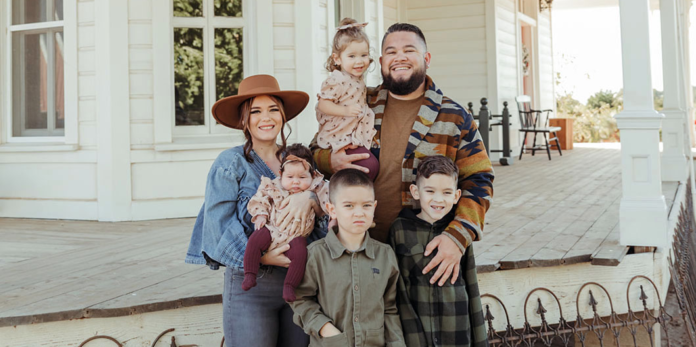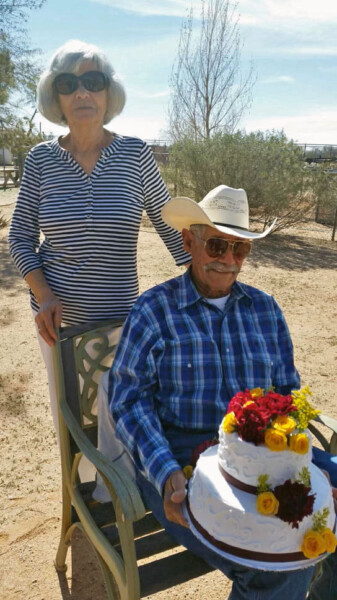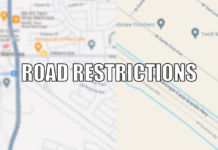
Native Arizonans know the look.
Tell a transplant you’re a genuine born-and-raised Arizonan and watch their brows raise, eyes widen and mouth begin to shape an “oh” or “wow” in response. It can feel both exhilarating and embarrassing to be recognized as the rare breed born with sun and heat coursing through the veins.
For Ray Nieves, that experience grows tenfold when he tells people Maricopa has always been his hometown.
“It’s kind of funny, I tell people I grew up here and they think I’ve been here for 10 years,” he said. “No, I’ve been here for a long time. Like, I’ve seen everything here evolve.”
Nieves identifies as a second-generation Maricopan, watching the once tiny farm town blossom into one of the fastest growing cities in Arizona. He remembered his friends in the little 2A Maricopa High School aching to move away, but he never saw himself living anywhere else.
“They couldn’t wait to get away, but I liked it here,” Nieves said. “It fit my lifestyle and people are surprised I still live here.”

“I can’t get away, I’m locked and loaded,” he laughed.
His mother, Noemi Nieves, moved to Maricopa from the historic border town of Douglas in 1980 as her father searched for an agricultural job. At the time, even Douglas — population 16,000 — dwarfed Maricopa.
“Douglas was a little town,” she said. “But they had stoplights, they had a post office and schools and a hospital. Maricopa didn’t have any of that. You blinked and you were in Gila Bend.”
It can be difficult to conceptualize just how much the city has exploded over the last two decades. In 2000, U.S. Census data showed Maricopa had a population of just more than 1,000. With its current population of more than 70,000, that’s a 7,000% increase over the years.
Both noted Maricopa’s agricultural identity still lingers with nearby farms pushed to the outskirts, the feed yard still operating and occasionally getting stuck behind a tractor on roadways.
But the 90-minute bus rides after school are relics of the past. The corn and alfalfa fields disappeared, along with the pecan tree groves and the evening “fog” that blanketed the area. In reality, the fog was dust and cow manure permeating the air.
“When the sun went down, the cows started to roam around after being huddled under the shade all day,” Nieves said. “There was one feed yard that didn’t use sprinklers to keep the dust down. So, when the cows moved around, you would get that slight wind and it would weave its way through the desert to town.”
While those sights and experiences are far in the rear-view, both Nieveses said they still feel a connection to Maricopa and look forward to raising a third generation in the city: Remy, 8; Rayden, 7; Alivia, 2, and Abigail, 1.
“The sense of community still exists,” Noemi said. “When Ray was growing up, I knew where he was and didn’t have to worry about him.”
“For me, it’s the sense of community but also the comfort that this is home,” Ray said. “My mom is here, my in-laws, my grandparents and my best friends are here. My kids get to grow up with my best friends’ kids. That foundation is already here … I’m excited for what the future holds.”
The October edition of InMaricopa Magazine is in Maricopa mailboxes and available online.




![City gave new manager big low-interest home loan City Manager Ben Bitter speaks during a Chamber of Commerce event at Global Water Resources on April 11, 2024. Bitter discussed the current state of economic development in Maricopa, as well as hinting at lowering property tax rates again. [Monica D. Spencer]](https://www.inmaricopa.com/wp-content/uploads/2024/04/spencer-041124-ben-bitter-chamber-property-taxes-web-218x150.jpg)

![3 things to know about the new city budget Vice Mayor Amber Liermann and Councilmember Eric Goettl review parts of the city's 2024 operational budget with Mayor Nancy Smith on April 24, 2024. [Monica D. Spencer]](https://www.inmaricopa.com/wp-content/uploads/2024/04/spencer-042424-preliminary-budget-meeting-web-218x150.jpg)





![Alleged car thief released without charges Phoenix police stop a stolen vehicle on April 20, 2024. [Facebook]](https://www.inmaricopa.com/wp-content/uploads/2024/04/IMG_5040-218x150.jpg)




![City gave new manager big low-interest home loan City Manager Ben Bitter speaks during a Chamber of Commerce event at Global Water Resources on April 11, 2024. Bitter discussed the current state of economic development in Maricopa, as well as hinting at lowering property tax rates again. [Monica D. Spencer]](https://www.inmaricopa.com/wp-content/uploads/2024/04/spencer-041124-ben-bitter-chamber-property-taxes-web-100x70.jpg)